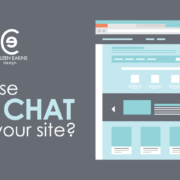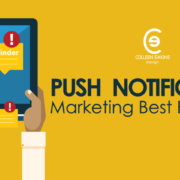Tips For Getting and Keeping Mobile App Customers
If you’re like most mobile app users, the chances are good that you have many apps that you’ve only used once or twice. Most people see a mobile app that they may like, download it, use a time or two, and quickly lose interest. People having a short attention span is commonplace, which makes acquiring and retaining mobile app customers a challenge in a crowded marketplace. People have many options when selecting a mobile app.
As more mobile apps are made available in marketplaces like Google Play and iTunes, people can become mobile app customers with just a press of a fingertip! Several reports, including one from BI Intelligence in 2015, peg the number of apps that people frequently use as three. Even though they may download and install as many as 100 apps in a year, only three of them are useful enough to become favorites. The trend of fewer downloads seems likely in the coming years, but there’s no reason to fear–yet!
It’s crucial to understand and address why people don’t use a mobile app after they install them. If you plan on distributing one, you need to know what psychological elements are at play. Retaining users and building app loyalty is critical to the success of your app.
Why Do People Stop Using Mobile Apps?
It’s no big surprise that the major reason that many mobile app customers stop using an app is quite simple. They forget! Even though they use their mobile phones or tablet devices for many of their regular communication needs, they forget what’s installed on their devices. The best mobile apps become interwoven with the mobile app customer’s daily life. While you can develop the most technically advanced and user-friendly mobile app, if the app doesn’t have a particular focus, your retention rate can suffer. You want to concentrate on appealing to a very specific audience that offers value and solutions that fit their lifestyle and their consumer profile. Your app also should be competitive against other apps in the same vertical or space.
Other Factors That Can Affect The Popularity Of Your Mobile App
Performance – In most cases, if a mobile app seems worthwhile or interesting, people won’t think twice about downloading it to their phone or tablet. Once installed, performance matters. Always be sure to thoroughly test and stabilize your app before putting it out for full release and distribution. Also, be certain you use a reliable mobile app host for your app to assure that it operates efficiently.
Cost – If you are charging for the use of a mobile app, there is always the risk that a free mobile app that has a similar offer can undercut your mobile app user base. It’s important to have a business plan in place before launching your app for best results. If you’re competing with other app developers in the same vertical, it’s imperative to offer more value than your competitors. If others have an app with similar features for free or at a lower price point, you could lose mobile app customers.
Ads And Monetization – Even if you offer a free mobile app, the chances are good that you’ll still want to monetize it using in-app advertising. But keep in mind that an overabundance of ads can significantly degrade your user’s experience. You want to find a reasonable balance of earning revenue and satisfying the desires of your user base. Too many intrusive or annoying ads could result in deletions and use of your mobile app.
Lengthy Registrations or Sign Up Requirements – It’s understandable that as a mobile app host that you want to collect some amount of information from the people who are using your app. It’s a good idea to streamline the Registration or Signup form as much as possible. It can be challenging to use a mobile keyboard to input information including a full name, email address, mobile phone number just to get started.
Tips For Higher Mobile App Customer Retention
Implementing a mobile app is certainly an investment in your business or Organization. You want to maximize the return you get on this expense. Here are some ideas to improve your results across the board.
Optimize the Operations – Take the extra time to test and optimize your app for the best possible performance. A mobile app that works flawlessly is one that will get enjoyed more than an app that experiences frequent crashes, is slow to start, or freezes the user’s mobile operating system. After this initial testing period, be sure to monitor and evaluate your app to keep it running at peak performance.
Use Push Notifications – Instead of having a dormant app that’s overlooked and forgotten, push notifications sent directly from your mobile app empower you to grab the attention of your user base and increase the retention rate of your mobile app user base. While you don’t want to inundate your mobile app users with push notifications, sending the occasional update with an offer or other pertinent information helps re-engage these users if they’ve forgotten about your mobile app.
Find A Fair Balance Of Ads – There’s nothing wrong with wanting to generate revenue from your mobile app. However, for best results over the long run, finding a fair balance of the ads that you display helps keep everyone happy. Mobile app customers are using your app willingly, so satisfying their desires while meeting your revenue targets is the sweet spot! Be particular about the ad networks and feature ads you run. If possible, keep the ads as closely tied to the general industry or vertical your app targets. Ideally, running promotions or special offers that result in direct sales for your company result in more sales and income than using advertising platforms to monetize your app.
If you want to learn more about mobile apps and how they can help your business grow, contact the team at Colleen Eakins Design via the contact form. We’re happy to help with everything from mobile app conception to completion!

I’m a Digital Marketer & Freelance Writer with a penchant for all things forward-thinking and positive. I’m a fan of abundance and progress.






